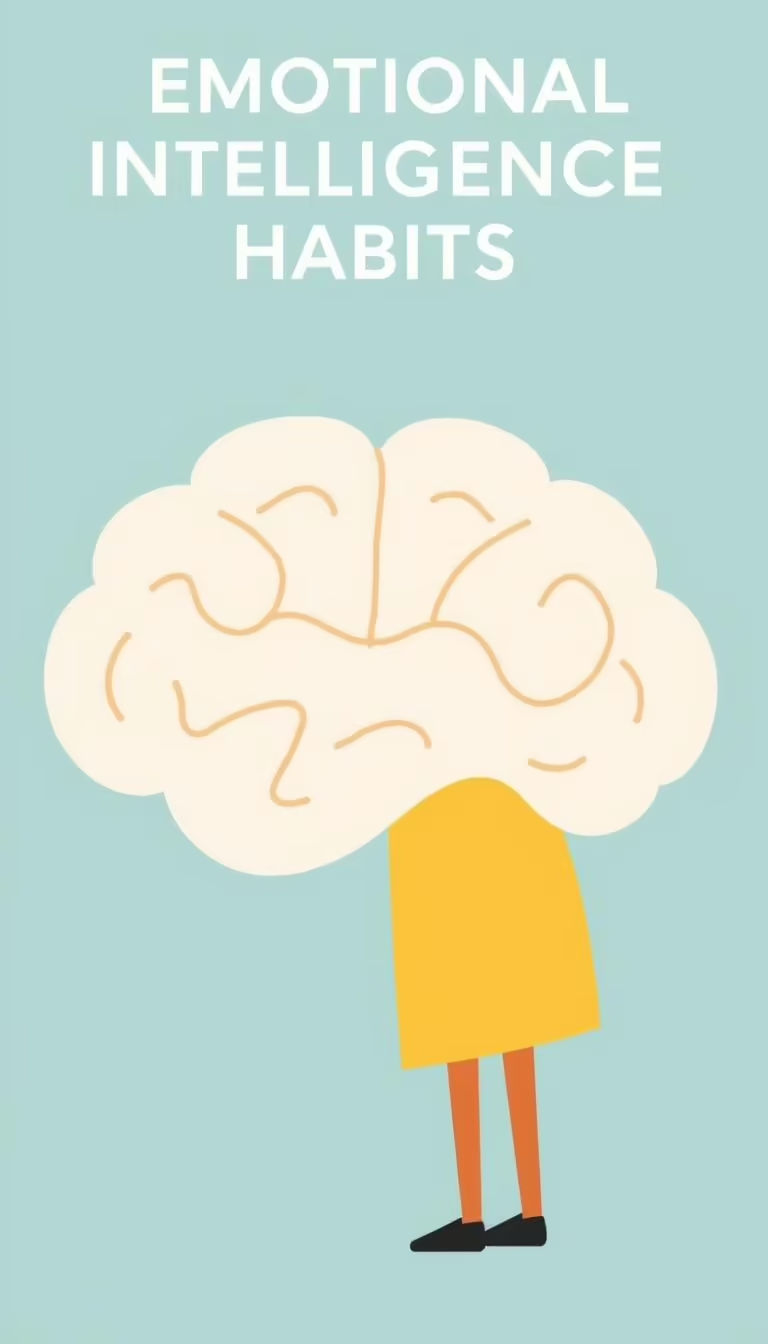Empathy Development: How to Strengthen It in 3 Steps
Table of Contents
I’ve learned that building stronger relationships is all about understanding and connecting with others. This connection comes from empathy development, a skill we can grow over time.

By working on empathy training, I’ve seen my emotional intelligence grow. This has helped me connect deeper with the people in my life. It makes my personal relationships better and helps our community feel more united and supportive.
In this article, I’ll share three effective ways to increase your empathy. These techniques will help you understand people better and build stronger connections.
What Is Empathy and Why Does It Matter?
Empathy is key to connecting with others. It lets us understand and share feelings. It’s linked to emotional intelligence and is vital for good communication skills.
In today’s world, empathy is more important than ever. Technology is making emotional connections harder. By practicing empathy, we can strengthen our relationships.
The Three Types of Empathy
Empathy isn’t just one thing. It has several types. Knowing these helps us understand empathy better.
Cognitive Empathy
Cognitive empathy lets us understand another’s thoughts and feelings through reason. It’s about seeing things from their point of view.
Emotional Empathy
Emotional empathy means feeling what another person feels. It’s about connecting with others on an emotional level.
Compassionate Empathy
Compassionate empathy combines understanding and feeling. It’s about helping others because we care.

The Science Behind Empathy
Studies show empathy is linked to mirror neurons in the brain. These neurons help us understand and mirror others’ experiences.
Mirror Neurons and Brain Research
Research shows mirror neurons are key to empathy. They help us feel and act like others. This is how we connect emotionally.
Empathy as a Learned Skill
While some are naturally empathetic, empathy training can help. By listening actively and trying to see things from others’ perspectives, we can grow our empathy.
“Empathy is about finding echoes of another person in yourself.”
Mohsin Hamid
| Empathy Type | Description | Example |
|---|---|---|
| Cognitive Empathy | Understanding another’s thoughts and feelings logically | A therapist understanding a client’s mental state |
| Emotional Empathy | Directly feeling another’s emotions | A friend feeling sad when their friend is sad |
| Compassionate Empathy | Taking action to help others based on understanding and feeling their emotions | A nurse providing comfort to a patient in pain |
The Current Empathy Crisis in America
A disturbing trend of declining empathy has gripped the nation, leading to a full-blown crisis. As we navigate the complexities of modern society, it’s becoming increasingly clear that empathy is the glue that holds us together. Without it, we face far-reaching consequences.

The trend of declining empathy is not just a statistical anomaly; it’s a pressing issue that affects us all. Studies have shown a significant drop in empathetic behaviors over the past few decades. The most pronounced effects are seen in the younger population.
Declining Empathy Trends
The data on empathy trends paints a concerning picture. Research indicates that the ability to understand and share the feelings of others has been on a downward trajectory. This decline affects not just personal relationships but also has broader societal implications.
The Digital Age Impact on Emotional Connection
The advent of the digital age has revolutionized how we interact, but it’s had an unintended consequence: it has altered the fabric of our emotional connections. While technology has made it easier to stay connected, it has also created a sense of emotional distance. People are more inclined to interact through screens than face-to-face, leading to a decline in deep, meaningful relationships.
“The more we use technology to connect, the more we risk losing the essence of human connection.”
Consequences of Low Empathy in Society
The consequences of low empathy in society are multifaceted and far-reaching. When we fail to understand and relate to each other’s experiences, we risk creating a society that is more divisive and less compassionate. The effects are seen in increased conflict, decreased cooperation, and a general sense of disconnection among individuals and communities.
As we move forward, it’s vital to recognize the signs of this empathy crisis and take proactive steps to address it. By doing so, we can work towards rebuilding a more empathetic society, one that values understanding and connection.
Benefits of Strengthening Your Empathy
Empathy has many benefits, affecting personal growth, professional success, and mental health. It can improve many areas of life. This shows how important empathy is.
Personal Relationship Improvements
Strengthening empathy makes us better partners, friends, and family. Empathy lets us understand and share feelings, making relationships better. It helps us solve problems and build stronger connections.
Professional Advantages
Empathy is also good for work. Leaders who show empathy earn loyalty and trust from their teams.
Leadership Enhancement
Empathetic leaders know what their team needs. This creates a positive work place. It boosts productivity and job happiness.
Team Collaboration
Empathy also helps teams work together better. When everyone feels heard, they work together well. This leads to achieving goals together.
Mental Health Benefits
Empathy also helps our mental health. It can lower stress and anxiety. Being empathetic makes us see life more positively, improving our well-being.
Step 1: Developing Self-Awareness
The journey to empathy starts with self-awareness. It means understanding your emotions, knowing what makes you upset, and improving your emotional smarts.
Recognizing Your Own Emotions
To start, you need to know how you feel. It’s about recognizing your emotions and why you feel that way.
Daily Emotion Journaling
Daily emotion journaling is a great way to track your feelings. Write down what you feel and why each day. This helps you see patterns in your emotions.
The body scan is another tool. It helps you notice how your body reacts to emotions. This way, you can better understand your emotional state.
Understanding Your Emotional Triggers
Knowing what makes you upset is key. Being aware of your triggers helps you handle tough situations better.
Practical Self-Awareness Exercises
There are many ways to boost self-awareness. Two effective ones are mindfulness meditation and asking yourself questions.
Mindfulness Meditation
Mindfulness meditation helps you stay in the moment. It makes you more aware of your thoughts and feelings.
Reflection Questions
Reflection questions help you understand yourself better. Ask yourself, “What am I feeling?” or “Why did I react that way?”
| Exercise | Purpose | Benefit |
|---|---|---|
| Daily Emotion Journaling | Identify emotional patterns | Enhanced emotional awareness |
| Body Scan Techniques | Recognize physical sensations | Increased awareness of emotional state |
| Mindfulness Meditation | Focus on the present | Reduced stress, increased calm |
Step 2: Active Listening and Perspective-Taking
The second step in our empathy journey is to improve our listening and perspective-taking. This helps us understand others better and build stronger relationships.
The Art of Being Fully Present
Being fully present is key to active listening. It means we must ignore distractions and focus on the person speaking. This way, we catch subtle cues that show their true feelings and needs.
To practice being fully present, try to eliminate distractions when interacting with others. Turn off your phone, make eye contact, and face the person. This simple act boosts your listening skills.
Techniques for Better Listening
Good listening is more than just hearing words. It’s about grasping the message behind them. There are several ways to improve our listening.
Paraphrasing and Validation
Paraphrasing means restating what someone said in your own words. It ensures you get their point right. Validation shows you understand and respect their feelings.
Example of paraphrasing: “Just to make sure I understand, you’re feeling overwhelmed because…?”
Non-Verbal Cues Recognition
Body language and facial expressions tell us a lot. Recognizing these cues can make us more empathetic.
Walking in Someone Else’s Shoes
Perspective-taking means seeing things from another’s point of view. It’s about understanding their thoughts, feelings, and reasons.
Perspective-Taking Exercises
One good exercise is writing a story from someone you know’s perspective. Try to get their thoughts, feelings, and experiences right.
Empathy Building Activities
Doing activities that challenge your view can also help. For example, acting out different social scenarios can show you how others might feel.
| Activity | Description | Benefit |
|---|---|---|
| Role-Playing | Act out different social scenarios | Improves understanding of others’ feelings |
| Perspective Writing | Write from another person’s perspective | Enhances empathy by imagining others’ experiences |
| Active Listening Exercises | Practice focused listening without interrupting | Deepens understanding of others’ needs and emotions |
By using active listening and perspective-taking in our daily lives, we can grow our empathy. These practices not only strengthen our personal bonds but also make our society more compassionate and understanding.
Step 3: Practicing Compassionate Action
Compassionate action connects understanding with making a difference. It’s about using empathy to help others. This journey has changed me, as well as those I’ve helped.
Moving from Understanding to Action
Going from understanding to action is key. It’s one thing to feel for someone; it’s another to act. When I started doing compassionate actions, my life and relationships changed for the better.
Small Daily Acts of Empathy
Small acts of empathy can make a big difference. They can be as simple as saying something kind or listening well. Being there for someone in need is also important.
Random Acts of Kindness
Random acts of kindness are powerful. They can brighten someone’s day and spread kindness. I once held the door for a stranger and got a smile back. It was a small act that made a big difference.
Supportive Communication
Supportive communication is vital. It’s about showing understanding and support through our words and actions. By listening and responding with empathy, we create a safe space for others.
Creating Empathy Habits
To keep empathy alive, we need to make it a habit. Habits are actions we do automatically. By making empathy a daily habit, we consistently support others.
30-Day Empathy Challenge
Try a 30-Day Empathy Challenge to build empathy habits. This involves doing a daily act of kindness for 30 days. It helps empathy become a part of our daily lives.
Accountability Partners
Having accountability partners helps too. Sharing our goals and progress with someone we trust keeps us motivated. It makes us feel responsible for our empathy practices.
| Empathy Action | Frequency | Impact |
|---|---|---|
| Random Acts of Kindness | Daily | High |
| Supportive Communication | As Needed | Variable |
| 30-Day Empathy Challenge | 30 Days | Significant |
Empathy Development Workshops and Resources
Empathy is key to understanding others. It’s about knowing ourselves and caring for others. There are many workshops, books, and digital tools to help grow empathy.
Structured Empathy Training Programs
These programs teach empathy through practice and feedback. They use role-playing and group talks. They help us see things from others’ viewpoints.
Books and Courses on Emotional Intelligence
Books and courses teach emotional intelligence. “Emotional Intelligence” by Daniel Goleman is a great start. Online courses on Coursera, edX, and Udemy dive deep into empathy.
Digital Tools for Empathy Coaching
Today, we have many digital tools for empathy. They include meditation apps and empathy coaching platforms.
Apps for Emotional Awareness
Apps like Headspace and Calm help with emotional awareness. They have modules for empathy and compassion.
Online Communities
Online forums are great for empathy support. Sites like Reddit have communities for emotional intelligence. They offer a space for discussion and sharing.
Overcoming Barriers to Empathy
The journey to empathy is not easy. We face many challenges along the way. Knowing these obstacles helps us move forward.
Recognizing Empathy Fatigue
Empathy fatigue, or compassion fatigue, happens when we’re too stressed or exposed to trauma. It affects those who care for others, like doctors and social workers. Spotting its signs, like less compassion and cynicism, is key to avoiding it.
Signs of Empathy Fatigue:
- Reduced ability to feel empathy
- Increased cynicism or detachment
- Physical symptoms like headaches or fatigue
Dealing with Defensive Reactions
When we listen with empathy, others might get defensive. This happens if they feel judged or misunderstood. Staying calm and not judging helps. Acknowledge their feelings without getting defensive back.
Balancing Empathy with Self-Care
It’s important to care for ourselves while empathizing with others. Knowing our limits and protecting them is essential.
Setting Healthy Boundaries
Healthy boundaries are key to self-care. They help us know what we can handle and communicate our limits clearly. This prevents emotional burnout and keeps our empathy strong.
Emotional Regulation Techniques
Techniques like mindfulness and deep breathing help manage stress. They prevent empathy fatigue. Regular practice boosts our emotional strength and empathy.
Understanding and tackling empathy barriers creates a more caring world. It benefits us and those around us.
Understanding Empathy and Its Role in Communication
Empathy is a vital component of effective communication. It allows us to connect with others on a deeper level, fostering understanding and building stronger relationships. By actively listening and showing genuine interest in others’ feelings, we can create a safe space for open and honest communication.
Empathy is not just about feeling sorry for someone; it’s about truly understanding their perspective and emotions. When we practice empathy, we become more attuned to the needs and concerns of those around us. This enables us to respond in a way that is supportive and compassionate.
Effective communication is built on empathy. When we prioritize empathy in our interactions, we create a foundation for trust and understanding. By actively listening and showing empathy, we can navigate conflicts and challenges more effectively, fostering a sense of unity and cooperation.
Developing empathy is a skill that can be cultivated through practice and self-reflection. By actively engaging with others and seeking to understand their perspectives, we can enhance our ability to empathize. This, in turn, strengthens our communication skills and fosters more meaningful connections with those around us.
Empathy is a powerful tool that can transform our communication and relationships. By embracing empathy and actively listening to others, we can create a more compassionate and understanding world.
Benefits of Empathy in Communication
Empathy in communication offers numerous benefits, including:
- Improved conflict resolution: Empathy helps us navigate conflicts more effectively by understanding the perspectives and emotions of all parties involved.
- Enhanced teamwork: When we prioritize empathy, we foster a sense of unity and cooperation, leading to more effective teamwork and collaboration.
- Stronger relationships: Empathy builds trust and understanding, leading to stronger and more meaningful relationships.
- Increased emotional intelligence: Developing empathy enhances our emotional intelligence, enabling us to navigate complex social situations more effectively.
By prioritizing empathy in our communication, we can create a more compassionate and understanding world.






